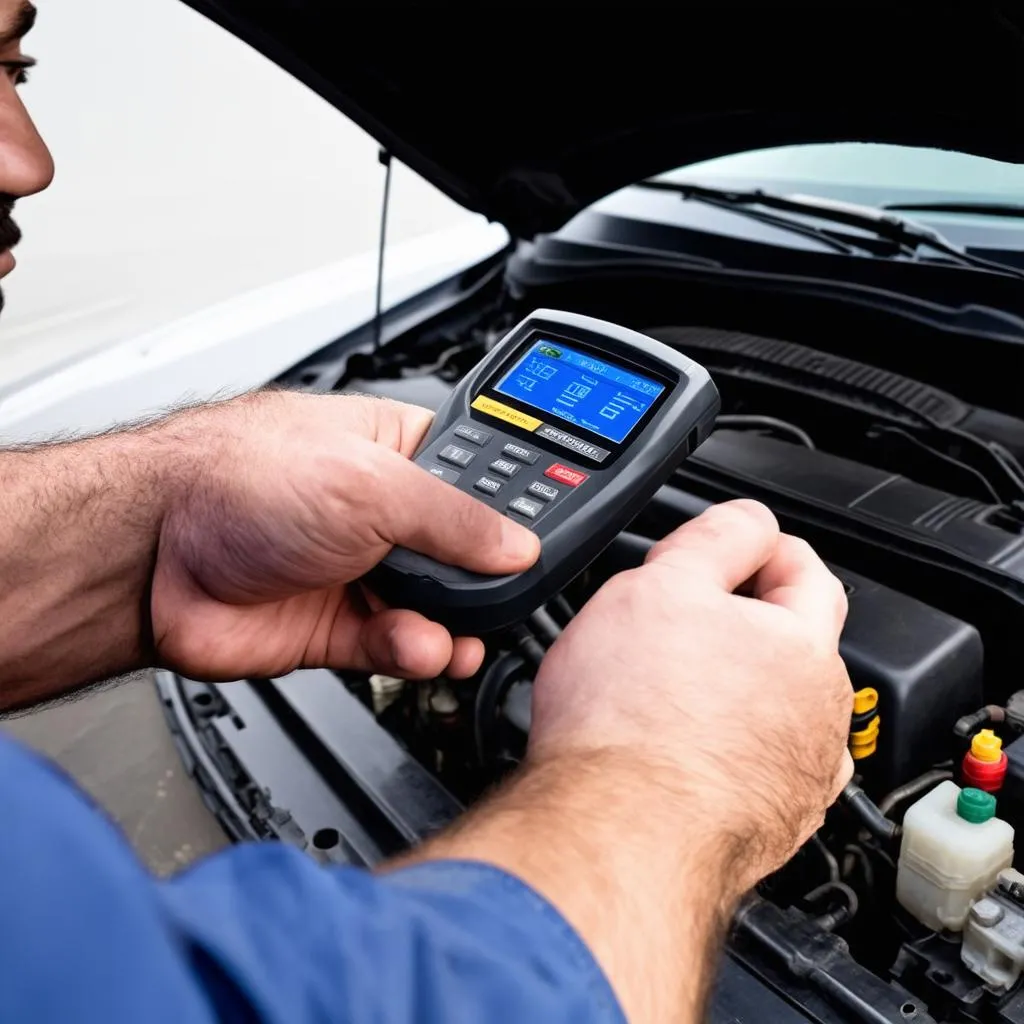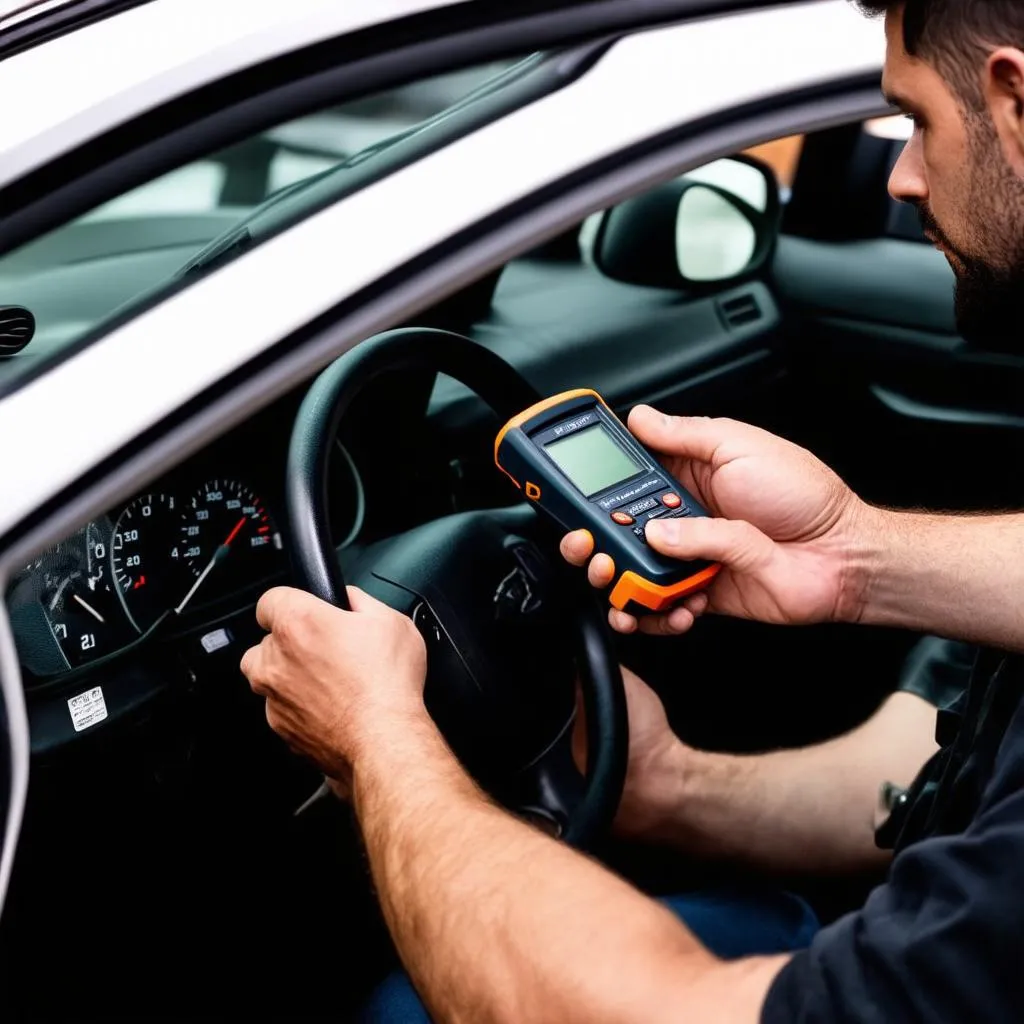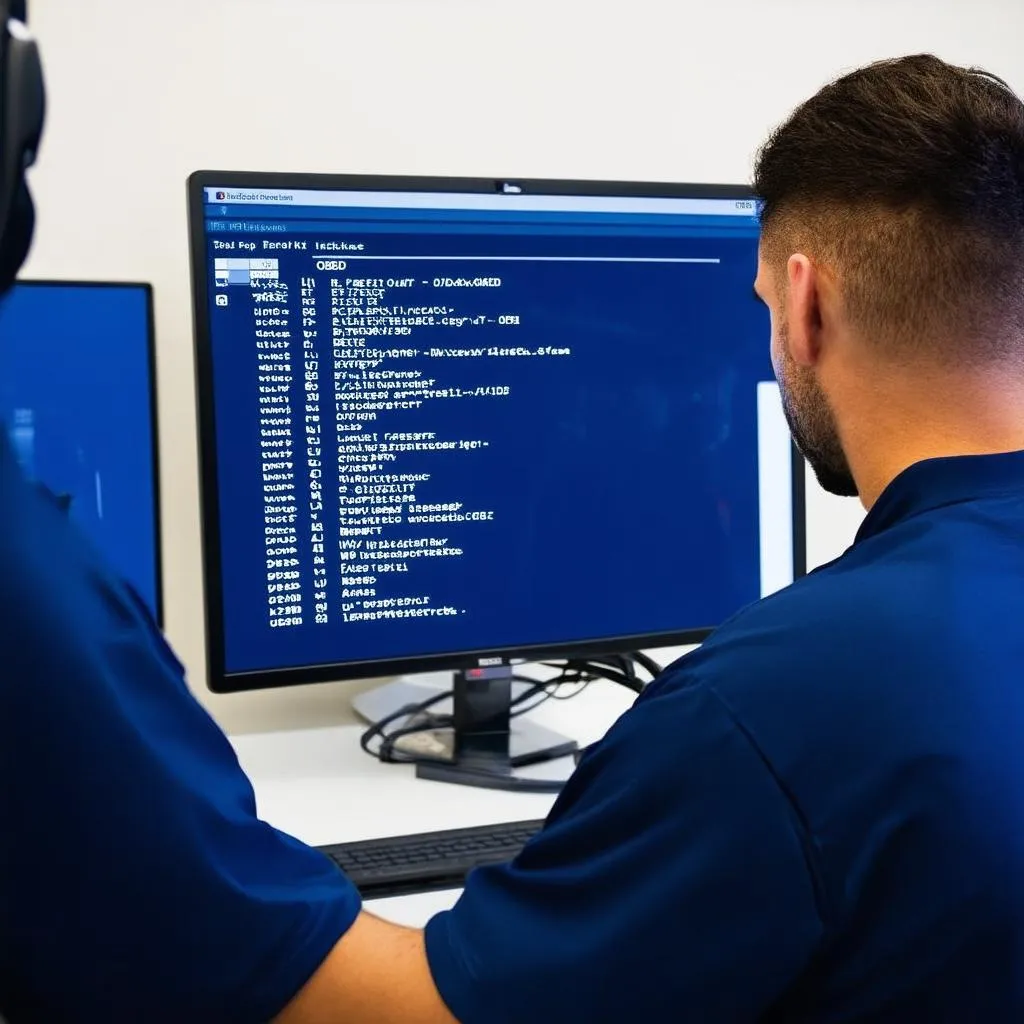Have you ever wondered why your car’s “Check Engine” light comes on? Sometimes it can be a simple issue like a loose gas cap, but other times it could signal a more serious problem. That’s where the OBD (On-Board Diagnostics) system comes in. The Obd Drive Cycle is a specific sequence of driving conditions that your car’s computer uses to monitor its emissions system and detect any potential problems. Think of it as a series of tests your car has to pass to make sure it’s running clean and efficiently.
Understanding the Obd Drive Cycle: A Deeper Look
What does “OBD” actually stand for? Well, it means “On-Board Diagnostics.” It’s basically a computer system in your car that monitors all sorts of things related to your engine and emissions. Think of it as your car’s personal doctor, always checking up on its health.
But what is a drive cycle? It’s a set of driving conditions that your car needs to go through so the OBD system can perform its diagnostic tests. The idea is to simulate real-world driving scenarios, like accelerating, decelerating, and maintaining a constant speed.
Why is the OBD drive cycle important? Imagine a car that’s running like a well-oiled machine, no hiccups, no issues. Now, imagine that same car starting to cough and sputter. This is where the OBD drive cycle comes into play. The system monitors your car’s emissions, making sure it stays within the acceptable limits. If it detects a problem, the “Check Engine” light turns on.
How the Obd Drive Cycle Works
The OBD drive cycle is designed to assess various components of your car’s emissions system. It’s like a series of checkpoints, each one testing a different aspect of how your car breathes and runs.
Key Stages of the Obd Drive Cycle
The OBD drive cycle usually involves three stages:
- Warm-up Stage: This is when you start your car and let it idle for a while to warm up the engine and exhaust system. It’s like getting your car’s engine ready for a workout.
- Cruise Stage: This stage involves driving at a steady speed for a certain amount of time, simulating highway driving. This lets the OBD system evaluate how your engine performs under normal conditions.
- Acceleration and Deceleration Stage: This is where the OBD system really gets to test your car’s mettle. It involves accelerating, decelerating, and cruising at various speeds, giving the computer a comprehensive view of your engine’s performance.
Navigating the Obd Drive Cycle: Understanding the “Check Engine” Light
Let’s address the elephant in the room – the dreaded “Check Engine” light. What does it actually mean? Well, it means your car’s OBD system detected something amiss, something that needs your attention. The “Check Engine” light is like a warning signal, letting you know that your car’s emissions system might not be operating as it should.
How to Handle a “Check Engine” Light: Don’t Panic!
First and foremost, don’t panic! The “Check Engine” light doesn’t always signify a major problem. It’s a good idea to take your car to a trusted mechanic to have the OBD system read and diagnose the problem. They can pinpoint the exact issue causing the light to come on.
How to Reset the “Check Engine” Light
In some cases, resetting the “Check Engine” light might be necessary. But be careful, as resetting the light without addressing the underlying issue could mask a serious problem.
 Resetting the Check Engine Light
Resetting the Check Engine Light
Here are some common reasons for a “Check Engine” light:
- Loose Gas Cap: This is a common and easily fixable issue. Ensure your gas cap is securely closed to prevent fuel vapor leaks.
- Oxygen Sensor Malfunction: The oxygen sensor monitors the air-fuel mixture in your engine. If it’s faulty, it can cause a misfire and trigger the “Check Engine” light.
- Catalytic Converter Issues: This component converts harmful emissions into less harmful gases. If it’s failing, it can affect your car’s performance and trigger the “Check Engine” light.
How the Obd Drive Cycle Relates to Car Repair
The OBD drive cycle plays a crucial role in car repair. It provides valuable information to mechanics, enabling them to diagnose and fix problems more efficiently.
 OBD Scanner
OBD Scanner
Using a Diagnostic Scanner
Mechanics rely on diagnostic scanners to access the information stored by the OBD system. These scanners can read the trouble codes that are triggered when the “Check Engine” light comes on. The codes provide valuable insights into the specific issue that needs to be addressed.
 OBD Scanner Codes
OBD Scanner Codes
Obd Drive Cycles for Different Cars
Each car model and year has its specific OBD drive cycle requirements. This means that the driving conditions required to complete a drive cycle might vary depending on the car you own. If you’re unsure about the specific drive cycle for your car, consult your owner’s manual or a reliable online source like techcarusa.com.
FAQ: Common Questions About Obd Drive Cycles
Q: How long does an OBD drive cycle take?
The duration of an OBD drive cycle can vary significantly depending on your car, the specific tests being performed, and the driving conditions. It could take anywhere from a few minutes to a couple of hours.
Q: Can I intentionally complete an OBD drive cycle?
Yes, you can intentionally complete a drive cycle by following the specific driving conditions required for your car model. However, it’s not necessary to do this regularly, as the OBD system continuously monitors your car’s emissions during normal driving.
Q: What happens if I don’t complete an OBD drive cycle?
If you don’t complete a drive cycle, the OBD system might not be able to accurately diagnose any potential problems with your emissions system. This could lead to undetected issues and potentially damage your car’s engine.
Q: What are the potential benefits of completing an OBD drive cycle?
Completing an OBD drive cycle can help to ensure that your car’s emissions system is functioning properly. This can lead to improved fuel efficiency, reduced emissions, and a more reliable engine.
What’s Next?
The OBD drive cycle is a vital part of your car’s health. Understanding how it works can help you identify potential problems early and keep your car running smoothly.
If you’re looking for more detailed information on specific OBD drive cycles for different car models, be sure to check out our website, techcarusa.com. We have a wide range of resources available to help you navigate the world of car maintenance and repair.
For further assistance with diagnostics tools or any car repair needs, please feel free to contact us via WhatsApp: +84767531508. Our team of expert car mechanics is available 24/7 to provide you with the support you need.
Remember, taking care of your car’s emissions system is a crucial part of responsible car ownership.
Let us know in the comments below if you have any questions or share your experience with OBD drive cycles!